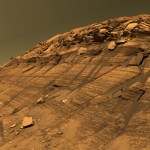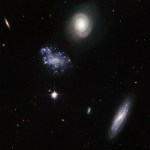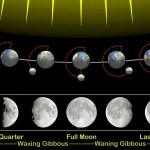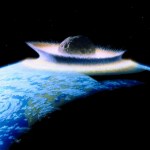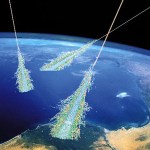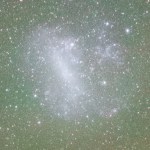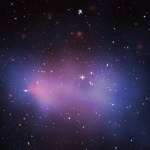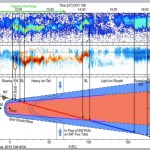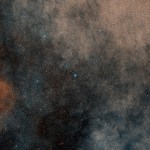Astronomy
"If you look at the field of robotics today, you can say robots have been in the deepest oceans, they've been to Mars, you know? They've been all these places, but they're just now starting to come into your living room. Your living room is the final frontier for robots." -Cynthia Breazeal
Ever since we first began observing Mars up close, there was well-founded speculation that there was a watery past. What appeared to be water-ice features and water-based clouds were abundant, and indirect clues like sedimentary rock, dried-up riverbeds and deposits that appeared to have a watery origin…
"Ships that could circumnavigate the galaxy in a few years, and count every cell in your body from light-years off, but he wasn't able to go back one miserable day and alter one tiny, stupid, idiotic, shameful decision..." -Iain Banks
And while we can't travel back in time at all to change the actions or events of the past, our incomplete knowledge of the past can always be improved as we move forward. This month's Starts With A Bang podcast is one of the most fun of all, as we cover how we went from mere lower limit estimates of how many galaxies are in the Universe to the first…
"I know perfectly well that at this moment the whole universe is listening to us, and that every word we say echoes to the remotest star." -Jean Giraudoux
Since the 1930s, humans have been broadcasting radio signals powerful enough to be picked up by a sufficiently advanced alien civilization, even one located many light years away. In 1960, we began monitoring the skies for a similar incoming message, armed with the knowledge that if a civilization were transmitting the same type of signals our radio and TV broadcasts consisted of, we’d be able to unambiguously detect them.
The reach of our…
"In order for the light to shine so brightly, the darkness must be present." -Francis Bacon
If you had previously thought the Universe contained a certain amount of stuff, like stars, galaxies and matter, then you might think that learning it had ten times as many galaxies might mean it had ten times as much matter. And if this were the case for matter like us, made of protons, neutrons and electrons, perhaps there wouldn’t be a need for something like dark matter, after all.
The different shapes, structures and morphologies of some of the galaxies in Hickson Compact Group 59 show evidence…
"The supermoon is a 16-inch pizza compared with a 15-inch pizza. It's a slightly bigger moon; I ain't using the adjective 'supermoon.'" -Neil deGrasse Tyson
Earlier this month, the full Moon was the first "Supermoon" we've seen all year, where the bright full Moon coincided nearly perfectly with perigee, or the Moon's closest approach to Earth. Yet it won't be the last: November's and December's full Moons will also be Supermoons, appearing up to 14% bigger and 30% brighter than the full Moons from, say, March and April of this year.
A perigee full Moon compared with an apogee full Moon,…
“From our home on the Earth, we look out into the distances ... to imagine the sort of world into which we are born… . But with increasing distance our knowledge fades, and fades rapidly, until at the last dim horizon we search among ghostly errors of observations for landmarks that are scarcely more substantial. The search will continue. The urge is older than history. It is not satisfied and it will not be suppressed.” -Edwin Hubble
Once thought to include anything that wasn’t a star, moon or planet in the night sky, our understanding of nebulae has grown tremendously over the…
“Honestly, if you’re given the choice between Armageddon or tea, you don’t say ‘what kind of tea?” -Neil Gaiman
Between the near-Earth asteroids that orbit close by our planet, and the distant comets that plunge periodically into the inner Solar System, Earth has plenty to be concerned about over the long haul. A slight gravitational nudge to any of those objects could put them on a collision course for our world. Thankfully, we can see them and track them, and calculate exactly how big of a threat they are to us.
Comet Lovejoy, as seen from the International Space Station, poses no threat…
“Our posturings, our imagined self-importance, the delusion that we have some privileged position in the Universe, are challenged by this point of pale light. Our planet is a lonely speck in the great enveloping cosmic dark. In our obscurity, in all this vastness, there is no hint that help will come from elsewhere to save us from ourselves.” -Carl Sagan
How many galaxies are there in the observable Universe? If you had asked this question a century ago, the answer could have been anywhere from one to infinity. If you asked fifty years ago, we’d know the number was finite, since we knew about…
“Scratch a cynic and you'll find a disappointed idealist.” -Jon F. Merz
The stars overhead might twinkle and cause us to wonder what they are, exactly, but perhaps a more important question is to wonder where they are. If we can determine the distances to the stars, and then use those known distances to measure the distances to other galaxies, we can not only determine how far away they are, but determine how the Universe has expanded over the course of its cosmic history.
The construction of the cosmic distance ladder involves going from our Solar System to the stars to nearby galaxies to…
"They most likely form as subsystems within looser associations and evolve by gravitational processes. Strong galaxy interactions result and merging is expected to lead to the ultimate demise of the group. Compact groups are surprisingly numerous, and may play a significant role in galaxy evolution." -Paul Hickson
With hundreds of billions of galaxies in an observable Universe nearly 100 billion light years across, it should come as no surprise that most galaxies are separated by millions of light years from their next-nearest neighbor. Yet even outside of dense galaxy clusters, large numbers…
“What is wild cannot be bought or sold, borrowed or copied. It is. Unmistakeable, unforgettable, unshamable, elemental as earth and ice, water, fire and air, a quintessence, pure spirit, resolving into no constituents.” -Jay Griffiths
At the earliest times, we can trace the history of our Universe back to an inflationary state, where the energy inherent to space itself caused a rapid, exponential expansion. At the latest (current) times, billions of years after inflation ended and the Big Bang occurred, dark energy has come to dominate the Universe’s expansion. These two states are very…
"You are both fools. You cannot see thoughts, or angels. One is an abstract, the other a fantasy. To compare the two would be silly. Of course, using inferential logic, we can detect the existence of thought by the evidence of its actions, just as I detected the existence of a new form of radiation! Seeing no evidence of God or angels, and applying Occam’s Razor we can effectively rule out God or angels with metaphysical certainty. By the way Mr. Astronaut, you have cancer." -Pavel Cherenkov (allegedly)
It’s true that nothing can move faster than the speed of light, but only if you’re in a…
"If you are fearful, a horse will back off. If you are calm and confident, it will come forward. For those who are often flattered or feared, the horse can be a welcome mirror of the best in human nature." -Clare Balding
One of the most iconic astronomy images is that of the Horsehead Nebula. Located just off the easternmost star along Orion’s Belt, the Horsehead is remarkable for being a “dark” nebula rather than emitting or reflecting light on its own. This is due to its dust-rich nature and the background emission nebula, caused by bright, young stars that ionize the gaseous…
"Teaching man his relatively small sphere in the creation, it also encourages him by its lessons of the unity of Nature and shows him that his power of comprehension allies him with the great intelligence over-reaching all." -Annie Jump Cannon
A look up at the stars in the night sky shows a clear distinction: some are fainter while others are brighter, some are redder while others are bluer, some are closer while others are much farther away. But what accounts for the differences -- some real and some only apparent -- between these stars? For most of human history, not only didn’t we know,…
"We conducted the first fully blind, three-dimensional search for cool gas in the early universe. Through this, we discovered a population of galaxies that is not clearly evident in any other deep surveys of the sky." -Chris Carilli
The Hubble Ultra Deep Field and its successor images represent humanity’s deepest views of the stars in our Universe. But there’s more to the Universe than just stars; even the normal matter in the Universe is more commonly present in the forms of gas and plasma than in stars. Hubble can never image those so far away, since their wavelengths are too long. But the…
“All I want is blackness. Blackness and silence.” -Sylvia Plath
Even on the darkest night skies from the most pristine locations on Earth, the night sky is never truly dark. Not even if you look away from the plane of the galaxy, on a moonless night, between the stars and away from any human-made or nature-made sources of illumination. Unlike the views that a telescope like Hubble can get from space, nothing on Earth is ever devoid of photons that have their origin in starlight.
The full UV-visible-IR composite of the XDF; the greatest image ever released of the distant Universe. Every…
“It may be that ultimately the search for dark matter will turn out to be the most expensive and largest null result experiment since the Michelson-Morley experiment, which failed to detect the ether.” -John Moffat
Dark matter is a puzzle that’s now more than 80 years old: the presence of all the known, observable, detectable normal matter — the stuff in the standard model — cannot account for the gravitation of the astronomical objects we observe. But despite our inability to create or detect it in a laboratory, we’re certain of its existence in the Universe.
Numerical simulation of the…
“Maybe some people don't feel scared when they think about comets and supernovas. Maybe they think it is wonderful.” -Lydia Netzer
What, in our Solar System, has a long tail from boiled-off frozen ices? What simultaneously leaves an X-ray signature when the solar wind collides with those boiled-off atoms, kicking electrons out and causing X-ray emissions? If you guessed a comet, you'd be "traditionally" correct, beginning with Comet Hyakutake in 1996.
Amateur photo of Comet Hyakutake, taken in March of 1996 by John Pane. Image credit: John Pane of http://www.cs.cmu.edu/~pane/hyakutake.html…
“We can only see a short distance ahead, but we can see plenty there that needs to be done.” -Alan Turing
The Cosmic Microwave Background data gave us an unprecedented picture of our Universe in terms of accuracy, with the latest Planck results showing us our Universe is 68% dark energy, 13.8 billion years old and is expanding at a rate of 67 km/s/Mpc. Too bad, then, that the Cosmic Microwave Background isn't the only way to measure the expansion rate, and that direct measurements -- using the cosmic distance ladder -- disagree with that significantly.
A map of star density in the Milky Way…
“It matters not what someone is born, but what they grow to be.” -J.K. Rowling
From 19,000 light years away, Terzan 5 looks a lot like pretty much any globular cluster you'd expect to find: it's massive, concentrated, with a huge number of stars at right around 12 billion years of age. But mixed in there is a second population of stars just 4.5 billion years old, and tremendously represented in number as well.
This wide-field image, based on data from Digitized Sky Survey 2, shows the whole region around the stellar grouping Terzan 5. Image credit: ESO/Digitized Sky Survey 2.
We've never…
